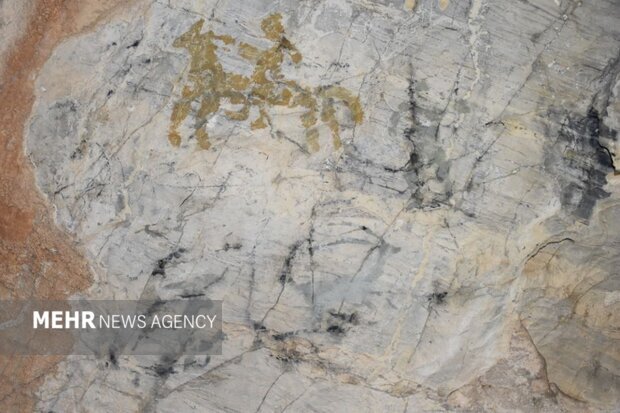Ali Sadr cave wasn’t an art studio for prehistorical humans, researchers find

TEHRAN—A team of researchers has found that previously discovered paintings on the rock walls of Ali Sadr cave are not associated with ancient people.
Earlier in June, some Iranian spelunkers and archaeologists publicized the discovery of modest artworks within the dark chambers of the gigantic water-filled cavern, which is widely believed to date from the Jurassic era.
At that time, Iranian archaeologist Esmaeil Hemmati-Azandaryani believed those paintings probably belonged to prehistoric times.
“According to the experts and archaeologists who examined the paintings on the wall of Ali Sadr cave, those paintings are not ancient,” ILNA quoted Ali Malmir, Hamedan province’s tourism chief, as saying on Monday.
“Seemingly, those paintings were drawn by local people in the past, and they are not prehistoric at all,” Malmir said.
As mentioned by Hemmati-Azandaryani, the paintings were initially found in a place close to travelers last year when we were conducting three-dimensional photographs of the cave.
“Spelunkers and archaeologists have discovered about 25 to 30 motifs in different color spectrums of green, orange, yellow, and black,” Hemmati-Azandaryani said.
“These paintings are of high significance. They depict archers hunting deer, deer, beasts of prey, as well as human beings riding on horse-like animals.”
According to the archaeologist, based on preliminary studies, ocher flowers, some plants, or the blood of animals have been used as the pigments to draw. “However, more studies are needed to obtain more complete results and pigment analysis,” he added.
Moreover, the archaeologist said there are many similar examples abroad, such as the ones in Lascaux caves in France and Altamira in Spain.
The gigantic cave embraces a huge matrix of sunless channels, ponds, grottoes, and water passages which are stretched along with imposing rock formations and stalactite-covered tops in a span of several kilometers.
Sightseeing there is connected with traversing well-lit labyrinths of waterways via paddle boats, walking on subterranean islets, as well as observing rock carvings of hunting scenes, artifacts, paintings, and vessels that are associated with prehistorical troglodytes.
Ali Sadr can be reached after someone hour of riding from Hamadan through the countryside. There are usually shuttles and taxis as well. The most recommended time to pay a visit is early in the morning, particularly on Fridays or holidays, when it’s likely to be more crowded.
Iran is geologically a part of the Alpine-Himalayan organic belt. The country features a variety of mountain ranges and hundreds of caves, with Ali Sadr, Karaftu, Kataleh Khor, and Quri Qaleh amongst the most notable ones.
AM
Leave a Comment